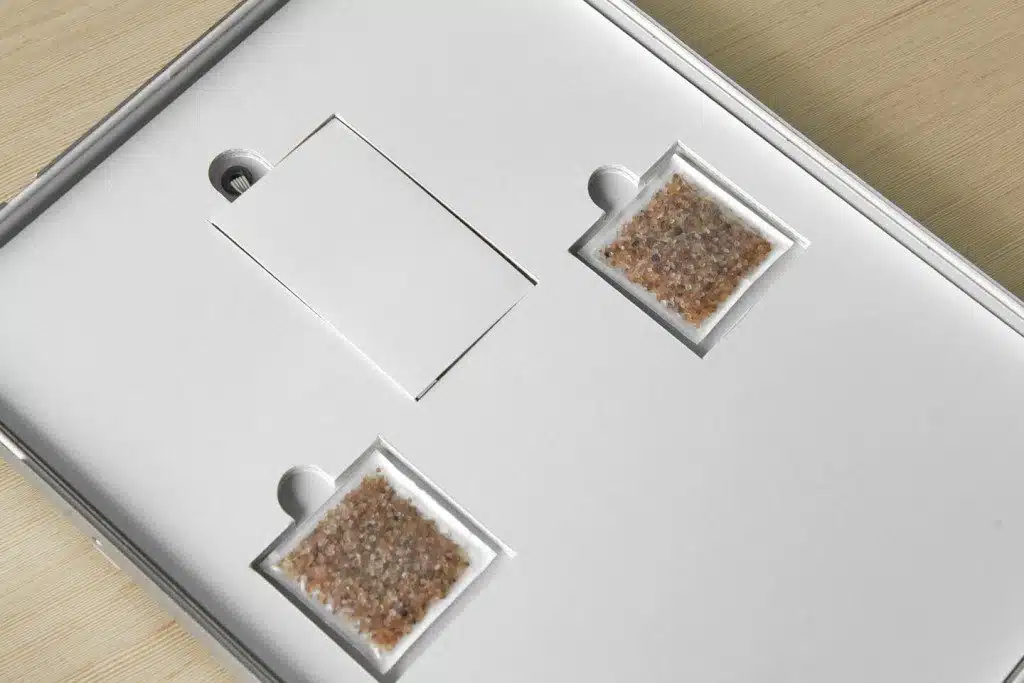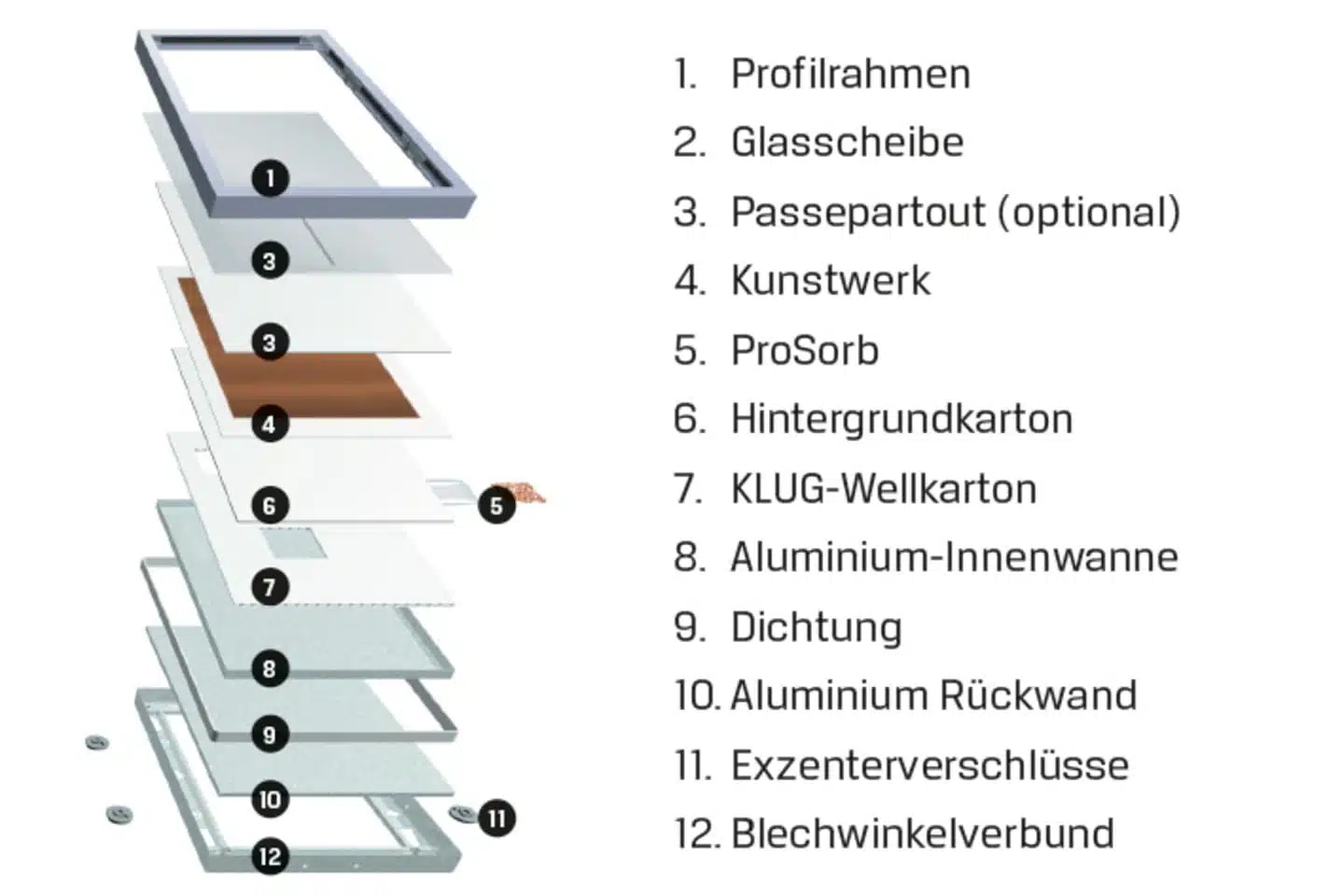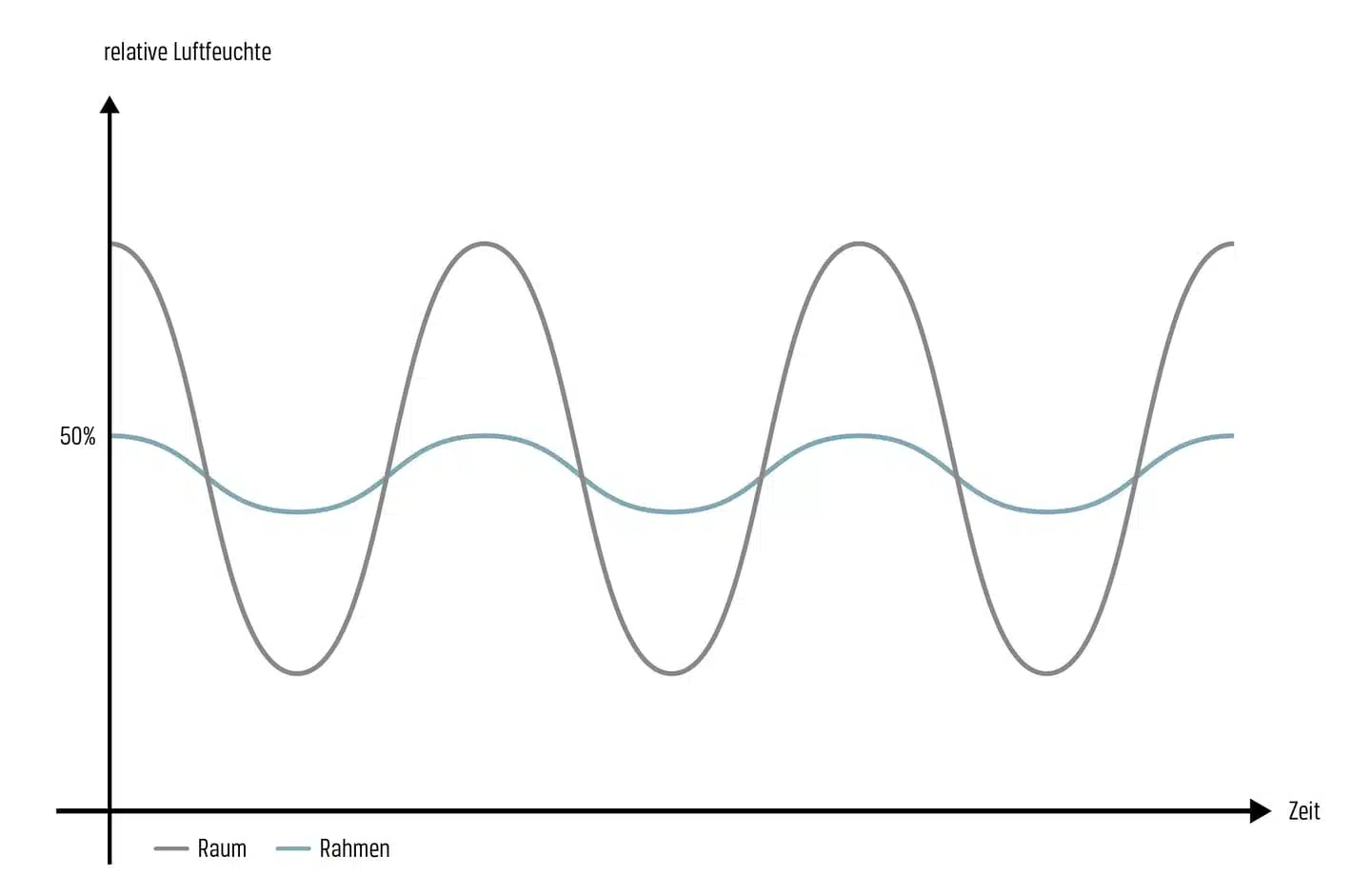How to preserve cultural assets from irreversible damage due to energy conservation?
The current energy crisis calls for a radical rethinking of how we use electricity and gas. Energy-intensive institutions such as museums and exhibition halls are therefore worried about their depots and exhibition spaces. This is because price increases due to war and the climate crisis are forcing institutions to save energy. But museums need to protect their artworks climatically and store them well for security reasons in order to make them accessible to future generations. By stabilizing the relative humidity at the painting, indoor air conditioning can be reduced. In this way, greater fluctuations can be allowed and energy can be saved at the same time.
Museums, as cultural institutions, are responsible for the largest CO2 emissions in the cultural sector. This comes from heating, lighting, air conditioning in exhibition and storage areas, and transportation in loan collections. Higher temperature fluctuations in exhibition spaces are the result when houses are forced to limit air conditioning and heating output due to extreme summers or because of energy conservation mandates. However, when implementing savings, the protection of the cultural assets to be preserved from irreversible damage must have top priority.
Measures for protection in museums
The German Museums Association [1] has published a list of recommended actions and energy-saving tips for this purpose. On the one hand, it recommends checking the relocation of collections to rooms that can be air-conditioned in a more energy-saving way or to buildings that offer the best climatic conditions due to their structural substance. Or checking the treatment of climate-sensitive objects according to a separate plan (e.g. special display cases, use of hygroscopic materials - such as wood or textiles - and/or introduction of salt solutions, liquid mixtures, silica gel and other drying agents). On the other hand, a review to store materials with homogeneous conservation requirements together, if possible.
Due to many different spatial conditions, not every room can guarantee a consistently gentle climate. Especially in circulation, fluctuating humidity becomes a stress factor for the paper. In order to be able to assess and evaluate the temperature and humidity situation in museums, the American professional association of all heating, cooling, ventilation and air-conditioning engineers has developed the ASHRAE standard. It states what effects climatic changes have on different materials. According to their assessment, paperwork from the postwar period is particularly difficult because it could easily degrade. But what can be done to protect paperwork from any fluctuations when austerity measures cause climatic conditions to deteriorate?
For optimal climate and control
Eine Möglichkeit, ist die Verwendung des PROTECT magnetic frame. Er wurde entwickelt, um empfindliche Werke, in schlecht oder gar nicht klimatisierten Räumen auszustellen oder als ideale Lösung für den Leihverkehr. Die Idee dahinter ist, die relative Luftfeuchtigkeit in einem kleinen Raum rund ums Bild zu stabilisieren. Erreicht wird dies durch einen luftdicht verschlossenen Bilderrahmen mit innenliegendem Puffermaterial – Silicagel ProSorb. Es kann Feuchtigkeit schnell aufnehmen oder abgeben. So werden schädliche Schwankungen der Luftfeuchtigkeit – durch Temperaturschwankungen – stark reduziert. Der säurefreie und alterungsbeständige Wellkarton bietet zusätzlich hohe Wasserspeicherkapazität und Wellstruktur für optimale Luftzirkulation.


The PROTECT protects without complex technology
It passively protects against changing relative humidity inside the frame, independent of the humidity outside, and ensures a constant microclimate of the artwork.
Die großen Schwankungen der rel. Luftfeuchte im Raum (grau) wird durch passive Puffermaterialien, im Inneren des Rahmens (blau), in einem fürs Papier unkritischem Bereich stabilisiert.
The PROTECT is suitable as an interchangeable frame, which can be used universally for permanent as well as temporary exhibitions. For example, if you only have a small stock of frames, you can continue to use the frames for many exhibitions simply by adapting a passepartout. Visually, the PROTECT matches all other frame types from HALBE.

[1] Deutscher Museumsbund, Energieeinsparung: Jetzt praktische Handlungsempfehlungen umsetzen, in: Deutscher Museumsbund Kurzmitteilungen, 22.08.2022; Source: https://www.museumsbund.de/energieeinsparungen-jetzt-praktische-handlungsempfehlungen-umsetzen/